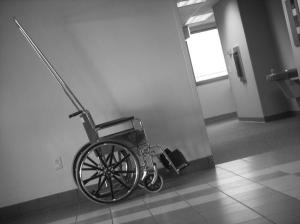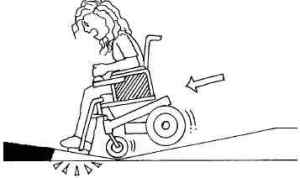The first time I introduced Skip to my parents, I knew I wanted to marry him.
It was October 1998 and my future husband was not in peak form.
He — like his mother and most everyone on her Hungarian side of the family — had developed a painful cyst at the base of his spine. A few days earlier, a doctor carved a 4-inch zig-zag incision, scooped out the culprit and sewed Skip back up with what looked like an embroidered lightning bolt emerging from the top of his butt crack.
It wasn’t pretty.
And Skip was in pain. By the time we pulled into my parents’ driveway, he was ashen and sitting side-saddle because leaning against the driver’s seat hurt too much.
My mom, I had warned Skip, had no social boundaries. None. She was nosy, touchy and, at times, a wee bit raunchy. But she could also be witty and disarmingly charming.
When mom saw Skip limping up the back stairs, she greeted him with a smile and an innocuous question: “What’s the matter?”
Skip explained about the cyst.
And before Skip could shake my father’s hand, mom walloped him with round two — the inappropriate question, the one I was certain would come even though I couldn’t predict the circumstances or the timing — “Can I see it?”
Skip, without hesitation, unbuckled his belt, dropped his jeans and let mom peel down the dressing so she could marvel at his wounded anatomy.
“Herm,” mom said to my father, “come here, you have to see this.”
My dad, politely averting his eyes, declined and asked Skip — in manly solidarity — if he wanted a beer.
Skip and I were in our early 30s then. My parents were in their late 60s. None of us could have imagined what the future held. But that moment — and the hours that followed — set the tone for all the years that followed, including the past three since my parents moved in with us.
Many readers of this blog have left messages and sent emails of encouragement to me. They say I am brave to help my parents and that my parents are lucky to have me.
But the truth is, my parents are lucky to have my husband.
If Skip didn’t support me — financially and emotionally — I couldn’t help my parents. He also pitches in daily to get things done. Today, on his day off, he took mom on a field trip to the library and listened patiently as she yammered on with two people she knew — even after those people seemed to lose interest.
How many books and movies — both comic and tragic – have been penned about Romeo and Juliet relationships doomed by quarreling or misfit Meet the Focker families? There’s a reason.
Even if you find a soul mate, a lover, a best friend, you’re destined for trouble if your match doesn’t fit with your family. Yes, couples can muddle through. And, for some, family isn’t as important. But I knew, particularly as an only child, that my husband would need both the right mindset and sense of humor to not only cope with my family, but to be happy with me.
I was already in love with Skip before I took him home to meet my parents. But as that day wore on — without tension, only laughter — I knew I would be his wife.
After mom re-bandaged his incision and Skip hoisted up his jeans, mom, who has no science or medical training, told Skip that his cyst wasn’t hereditary.
It was, she declared, his unborn twin.
Mom, now with dad on her side, told the story of a man they knew in Florida who had the same sort of cyst. When doctors operated, they found hair, tiny teeth and bones. Doctors concluded that the man’s body formed the cyst to expel the remains of a twin he had unknowingly carried with him for decades since birth.
Skip didn’t argue. He didn’t talk about all of his family members with the same issue. Or that, thankfully, his doctors did not report finding any teeth lodged above his butt crack.
Only later, when we were alone, did we laugh, not realizing at the time that his lightning-bolt scar would forever be known in our family as “twin.”









